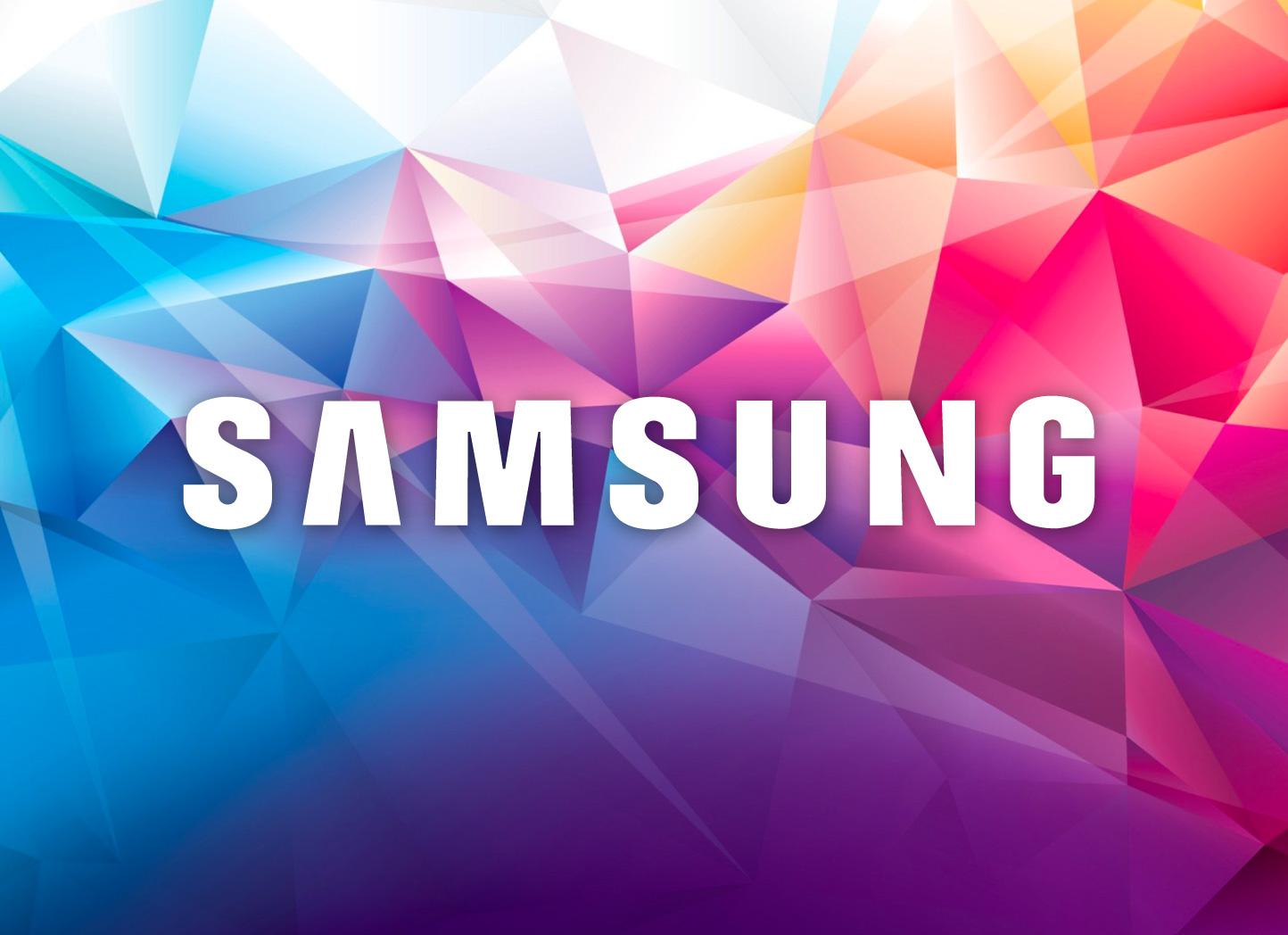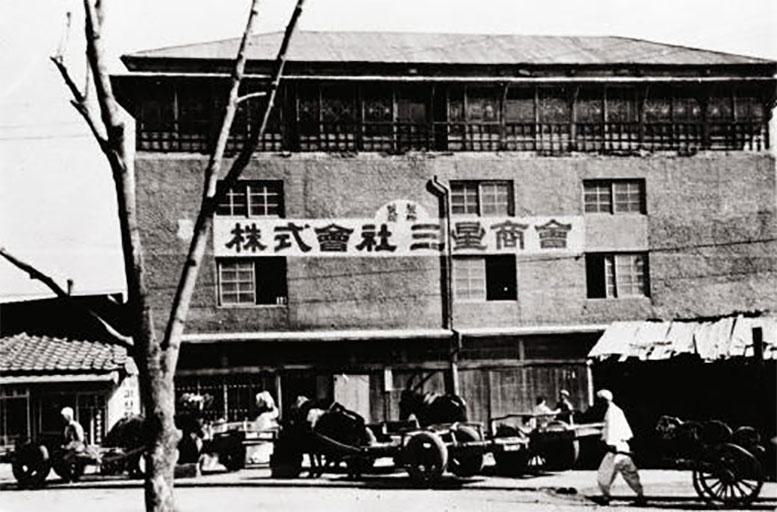History of the Samsung Logo

Samsung is one of the world’s top producers of cutting edge electronics. The company’s understated wordmark appears on millions of electronic devices and is recognized worldwide. And yet, given that the establishment was founded nearly a century ago, it becomes obvious this hasn’t always been their business model.
1938: Humble Beginnings

The company was founded as Samsung Sanghoe by Byung-Chull Lee, in the city of Taegu, Korea. The name itself translates to “Three Stars”, known in Korean symbolism as ‘hanja’ which translates to “big, numerous, and powerful”. The company got its start exporting dried local vegetables, fruit and fish to Manchuria and Beijing. For many years they operated without any branding or marketing and in 1958, Samsung presented their first logo.

The wordmark is written in Korean along with a circle enclosing three stars which are superimposed over three stripes and a couple of stylized wheat plants that represented the company’s agricultural roots.
The 1960s: The Future of Electronics
The business would profit immensely over the coming decades, spurning Lee to create subsidiaries and expand to new markets. What was once a simple export business was now beginning to flourish into a manufacturing empire which would offer an increasing variety of products.
In 1969, Lee founded Samsung-Sanyo Electronics. Their first product was a black and white television and the company decided to rebrand in order to reflect this new direction.

Here we see the 3 star motif taking more of a backseat as the wordmark is pushed to the forefront. The incorporation of the slightly rectangular box is intentional as the company’s goal is to dominate the television market, which is now reflected by the corporate identity.
The 1980s: Age of Mobile Telecommunication
In 1985, Samsung introduced the SC-1000, a mobile unit which was engineered for in-car use only. It would mark the beginning of a new chapter in Samsung history, heralded by a new logo.

In this iteration, Samsung’s designers explored further simplicity, removing the outside circle which had long been a visual staple of the brand and substituting it for the three stars which are composed of minimal diamond shapes placed at interlocking angles. With the sharp lines and use of negative space, we can see the company’s transition towards a more tech-oriented identity.
1993: The Frankfurt Declaration
From the 1980’s to the early 90s, the mobile market would become very competitive. Samsung’s chairman Kun-hee traveled the world to review the company’s standing. In 1993 he invited 200 company executives to Frankfurt where he would deliver a stirring, 3-day speech outlining an elaborate roadmap for the company’s future.

His vision would lead to market dominance on the mobile front, while spurring designers to create a more modern brand. This update features the most notable visual departure from earlier logos. Gone are the three stars that once defined the company. The wordmark has taken center stage, carved from a blue ellipse tilted at a 10-degree angle. This was meant to be a graphic representation of the universe - a symbol of the company’s perpetual ambition.
2015: The Bare Essentials
After two decades the logo is revisited once more, this time eliminating the blue ellipse and focusing completely on the wordmark.
 ## Conclusion
## Conclusion
Today one can only marvel at how far this company as come. Who could have known that a humble merchant shipping vegetables, fruit and fish to three locations would eventually spearhead a global empire of household electronics and wearable computers. Samsung’s ever-changing business model is reflected in the company’s brand - one that is sure to evolve in the coming years.
Fine Print Art is an educational independent research publication. The above content has not been officially sponsored by Samsung Electronics Co., Ltd.
How FinePrintArt.com Maintains Its Ad-Free Creative Platform
FinePrintArt.com is a unique platform developed and maintained by Fine Print New York, experts in the restoration of antique, rare & damaged wallpapers. This collaboration allows this website to offer insightful, ad-free content on creative artists and the evolution of visual branding. Fine Print's expertise in restoring vintage designs directly informs the rich, well-researched articles found here, showcasing our commitment to both historical preservation and contemporary artistic exploration.
Meet the Founders: The Creative Minds Behind Our Platform
Joseph Gornail a distinguished printer/photographer and the visionary behind Fine Print New York, hails from SoHo, Manhattan. Rooted in a family tradition of NYC printing, Joseph mastered the craft as a teenager. His significant impact on the New York printing industry ignited in 1996 with Dolo Records/Stretch Armstrong. He founded All City Marketing & Printing in the late '90s and co-created the iconic streetwear label Orchard Street with partners Benjamin Holloway and Greig Bennett in 1999. In 2004, Joseph launched Fine Print NYC, establishing it as a leading commercial printing firm. The company debuted with a landmark project for Nike, epitomizing innovation and resilience in the modern digital landscape.
Steven Garcia a prominent designer/illustrator and creative director at Fine Print, originates from Bushwick, Brooklyn. A graduate of Fashion Industries High School and the Fashion Institute of Technology (F.I.T.), Steven has carved a notable path in the design world. His early career highlights include a role as a sought-after professional retoucher and storyboard artist at Saatchi & Saatchi in 1996. Embracing his entrepreneurial side, Steven founded ShinyDesign in 1998, which later became a key design partner for Fine Print NYC in 2004. His extensive portfolio features collaborations with elite brands such as Snapple, The Waldorf Astoria, Netflix and Sony, cementing his status as a key influencer in New York's vibrant advertising & design industry.
